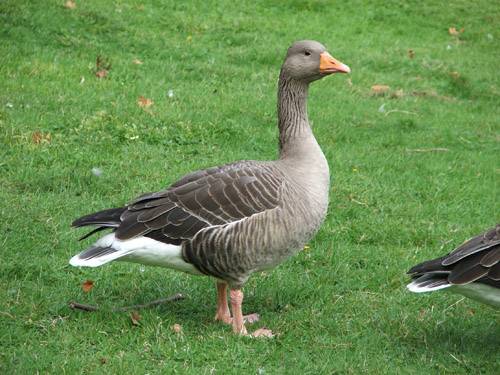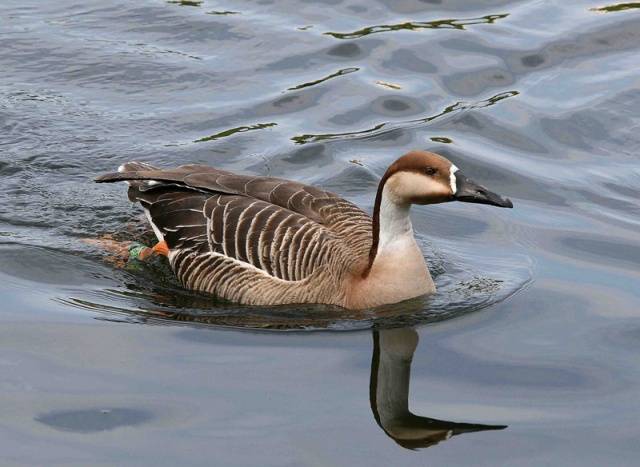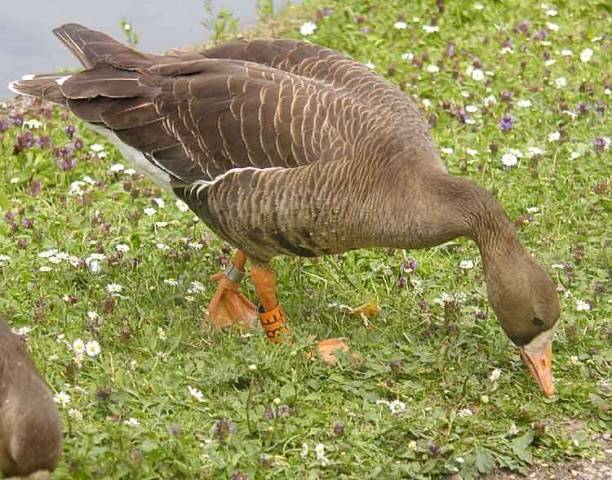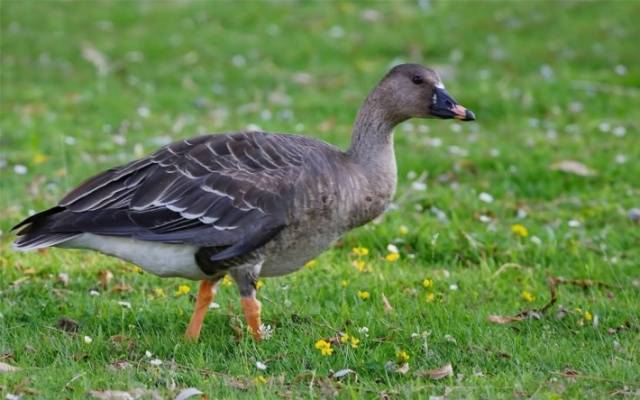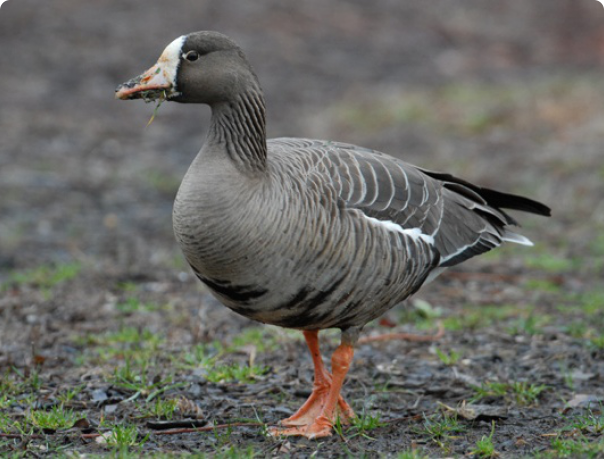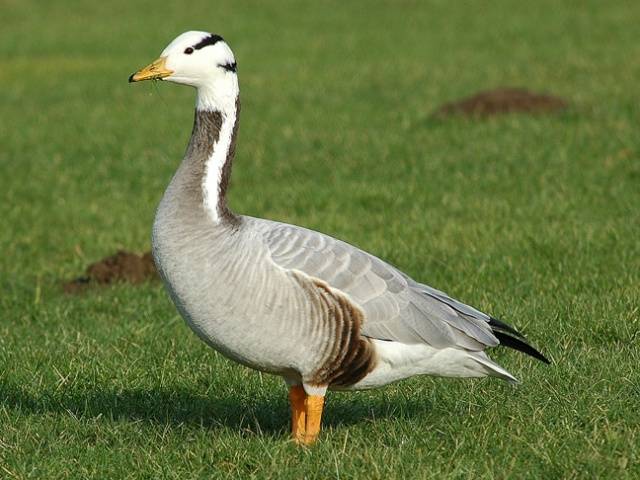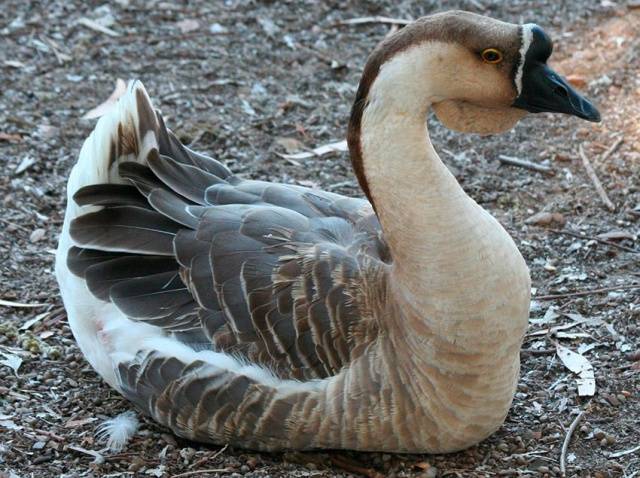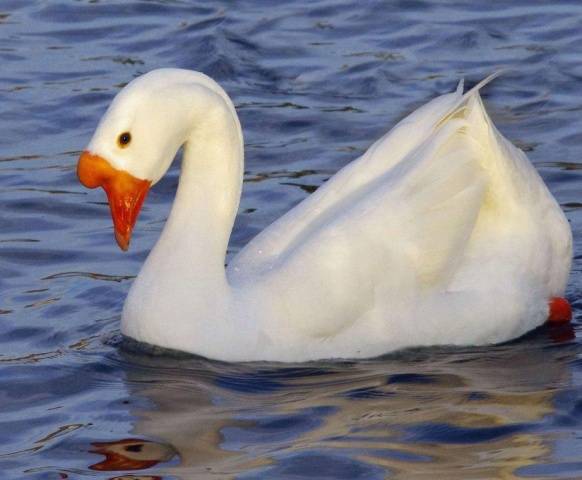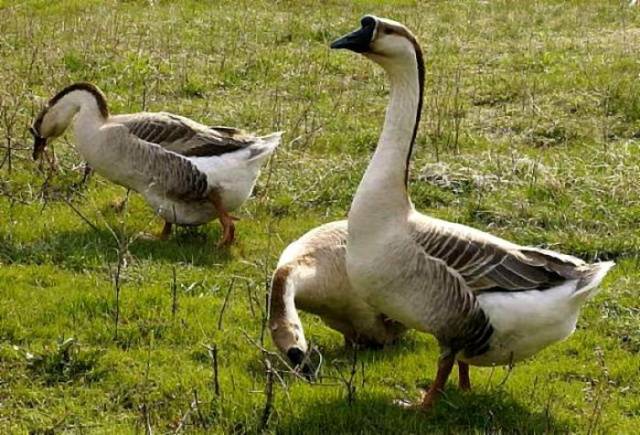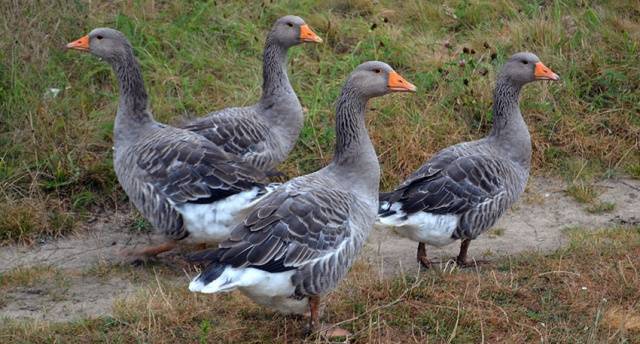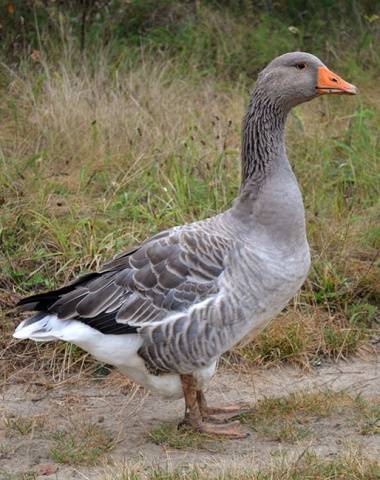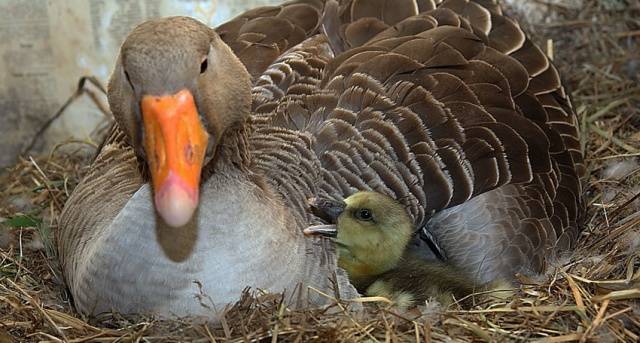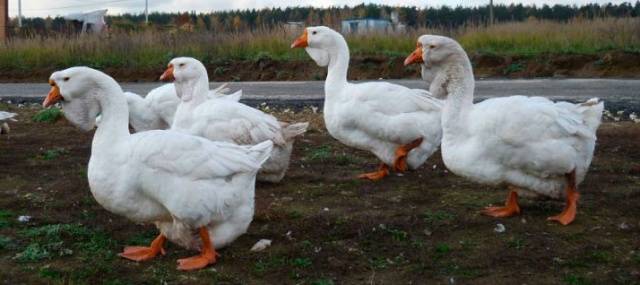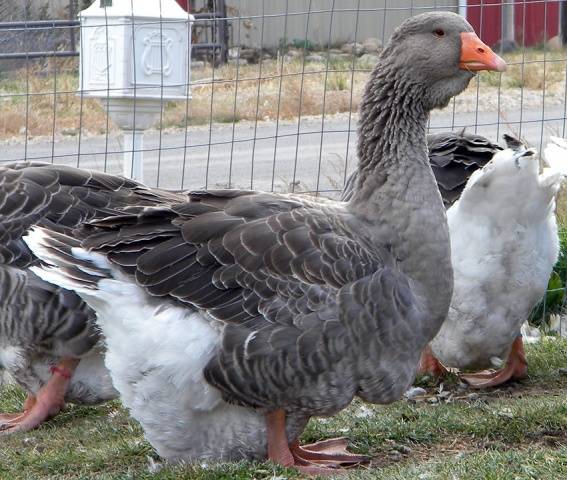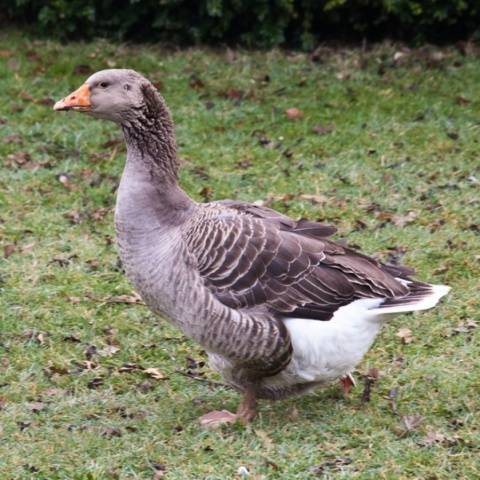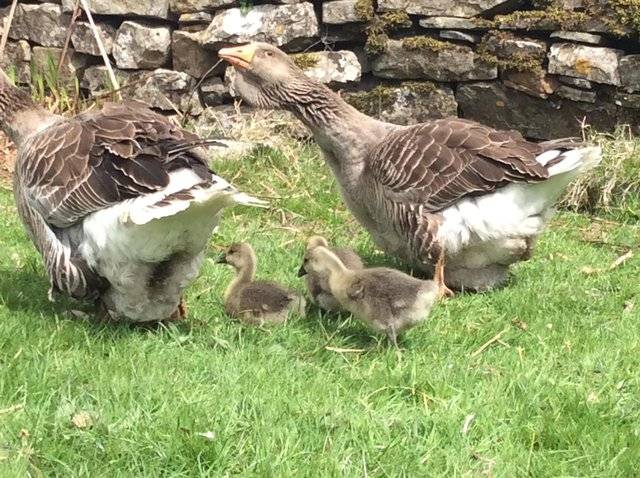Content
Unlike the domesticated duck, which has only one species of wild ancestors in its progenitors, geese have two ancestors: the gray goose and the dry goose. Chinese breeding has changed the Sukhonosa very much. It is impossible to confuse him with today's domestic geese. But the gray goose in the photo without a scale can easily be confused with a domestic breed.
Gray wild goose
At least demand documents to prove that he is wild. Live, the differences are clearly visible. The weight of a wild gray goose ranges from 2 to 4.5 kg. Due to its low weight, this bird flies very well, which causes the envy of domestic geese, when the flyers (hybrids with a wild goose) do not hobble a few hundred meters to the pond, but rise on the wing and reach the reservoir in a few seconds.
Sukhonos
Sukhonos cannot be confused with his domestic descendant. If the Chinese goose has a bump above its head, and the beak is as if artificially attached to the skull, which is chopped off in a straight line, then the dry-nose has a streamlined head, and the beak naturally continues the line of the forehead. The weight of this bird is almost the same as that of the wild gray goose: 2.8 - 4.5 kg.
There are suggestions that not only dry goose and gray goose, but also other representatives of geese took part in the formation of domestic geese.
White-fronted.
Bean goose.
Lesser White-fronted Goose.
Mountain.
There is even an assumption that the mute swan also took part in the process. But this is already too much. Taking into account the free crossing of breeds of domestic geese with each other to obtain fertile offspring, we will have to admit that either all geese plus the swan belong to the same species, and the differences are just phenotypic differences of subspecies; or the ancients possessed the techniques of genetic modification at the DNA level.
Geese may in fact be subspecies, since the same bean goose occupies an area in the north of all Eurasia from Greenland to the Far East, intersecting with other geese.
But the swan is already too much. If the goose had the opportunity to interbreed with a swan, the farms would have hybrids of swans with geese, like mulardam - mallard hybrids and musky duck or hybrids guinea fowl and chicken. But so far, only the Lindovskaya (Gorky) breed is recorded as hybrids of a swan with a goose. Apparently, based on the letter "l" in the title.
It is most likely that the true ancestors of domestic geese were at most two wild species, which may indeed be subspecies.
Geese were domesticated more than 3 thousand years ago. If we recall the rapid spread of chickens from Southeast Asia to the west, it can be assumed that the goose traveled a similar path.
Domestic goose breeds with photos and descriptions
The main direction of breeding in the domestication of the goose was to increase the body weight to obtain a large amount of tasty and almost free meat.
All geese breeds today are divided into three groups:
- small;
- medium;
- large.
Small breeds have a decorative function and it is almost impossible to find them.
Mediums with higher egg production also ceased to be in demand with the advent of portable home incubators and the introduction of industrial egg crosses in chickens. If earlier goose eggs were prized when added to dough, today you can simply add more cheap chicken eggs. Therefore, egg-laying geese are also beginning to become a thing of the past, although it is the medium-sized breeds of geese that are best suited for domestic breeding.Only meat breeds of geese remain.
One of the medium-sized breeds of geese, which is often not bred clean today, but is used to cross with other heavier breeds, is the Chinese goose.
Colors of Chinese geese with photo
Chinese geese are medium-sized birds, one of the few breeds belonging to this group that are still widespread in Russia. In this breed, there are two color options: white and brown, repeating the color of the wild dry-nose.
Even a white stripe has been preserved, separating the skull from the beak at the dry-nose.
The white Chinese goose was most likely split from the brown one after a gene mutation.
The "Chinese" are distinguished by good egg production. Individual geese can lay up to 100 eggs per season, although usually the number of eggs ranges from 45 to 70 pieces per season. When laying eggs in the incubator, about 75% of the goslings are hatched. Goslings grow quickly, already at the age of two months, reaching a weight of 3 kg with an adult weighing 4 - 5 kg. Puberty in Chinese geese occurs at 9 months. Thus, the goslings hatched in May will begin to lay eggs as early as February of next year.
But on the territory of Russia, domestic large breeds of geese intended for growing for meat are more common. Many of these breeds were bred in Russia, some, for example, Toulouse, were brought from abroad.
Meat breeds of Russian geese with photos and descriptions
For meat production in Russia, the best breeds are considered to be Kuban, Gorky (Lindovskaya), Large Gray, Rhine, Kuban and some other breeds.
Kuban breed
This is not the largest breed of meat geese. Therefore, today they are working with her to increase body weight. The "Kuban" people have two populations. The first was created by backcrossing the Linda breed with the Chinese brown goose. The birds of this population look very similar to the Chinese ones.
They also have similar weight and egg production.
The second population has a white color and was bred by crossing white Lindovsky with Emden, large gray and small Vishtines today. Outwardly, it is just a white variation of the brown Kuban goose with a light beak and paws.
The weight of the gander of the Kuban breed is 5 - 5.5 kg, of the goose - 4.5 - 5 kg. Geese carry 75 - 90 eggs weighing 150 g per season.
With the spread of incubators, this even benefits them, as it allows them to get the maximum number of eggs per season. The hatchability of goslings in incubators is about 80%. By the age of 2 months, the goslings gain 3.5 kg of live weight.
Sexual maturity in this breed occurs at the 9th month of life.
Large gray breed
There are two types in the breed, which is associated with the rather large age of the breed, which began to be bred even before the Second World War. The breeding of the breed began in Ukraine, from where the goose herd had to be evacuated to Tambov when the German troops advanced.
When creating the Ukrainian (Borkovsky) type, Romny geese were crossed with Toulouse geese. Further, the hybrids were bred "in themselves", kept on grazing in the pastures. Borkovskie geese are relatively late maturing, but at the same time their egg production grows until the fifth year of life, after which it begins to decline.
For breeding the steppe Tambov type of large gray goose, a similar crossing of the Romny and Toulouse breeds was carried out, followed by breeding "in itself". The difference is that in Tambov, geese were bred when kept on waterless pastures. The goal was to breed a breed group adapted to low-water steppe regions.
Large gray ganders weigh 6-7 kg. When fattening for slaughter, they can reach 9.5 kg. Goose 6 - 6.5 kg. Or 9 kg.
Therefore, you should not rejoice if the weight of large gray geese in the courtyard exceeds 7 kg. It is difficult for large birds to mate.The largest goslings from the brood should go for meat.
Egg production in large gray ones is relatively low, maximum 60 eggs if there were two laying cycles. With one cycle from 35 to 45 eggs weighing 175 g. Hatchability of goslings is also not at the height: 60%.
But the advantage of this breed is its endurance and undemandingness to the conditions of maintenance and the presence of reservoirs. Birds can feed themselves by grazing in the meadows and picking up the fallen grain in the harvested grain fields.
Large gray geese are good brood hens. However, the ganders also show themselves to be good fathers of the family, creating a reputation for the entire goose family as vicious tweezing creatures.
And without a reputation and offspring, it will not be long to lose.
Young animals gain weight well and by 9 weeks already weigh 4 kg. Often, goslings of this breed are forcibly fattened to obtain a large fatty liver.
But if the question is "what breed of geese is better to choose for breeding for meat", then the best option would be to have two breeds: large gray and Gorky (Lindovsky), feeding their offspring for meat.
It is better not to breed Lindovskaya and large gray crosses in themselves, although they turn out to be larger than the parental forms. Due to some kind of incompatibility in genes, male crosses often turn out to be underdeveloped and are not able to have offspring. In addition, the fertility of eggs in these crosses is also low, not least because of the high weight.
disadvantages
If you need purebred and high-quality representatives of a large gray breed, then you should pay attention to the disadvantages unacceptable by the standard:
- too little weight;
- purse;
- a bump on the nose;
- narrow chest;
- too large an angle of deviation of the body from the horizontal line;
- faded color of the beak and paws (may also be a sign of a disease).
The second and third points indicate the non-purebred origin of the bird.
Gray and Italian geese:
Kholmogorskaya
Kholmogorytsy are the largest representatives of meat breeds in Russia. Their weight can reach up to 12 kg, but only in those who were fattened for slaughter. The average weight of a Kholmoghir gander is 8 kg, a goose is 6-7.
Kholmogory people come in two lines: the Tula fighting geese "took part" in the creation of one; the second was bred by crossing gray and Chinese geese.
Leaving too large a bird for further breeding is not advisable, since egg-bearing characteristics Kholmogory geese already small: no more than 30 eggs per year. Usually, however, 10 - 15, and even less for young people. There is a clear correlation between the size of a goose and the number of eggs it carries: the smaller the goose, the more eggs it can lay per season.
However, this is a standard situation for all birds: do you need eggs or meat?
If we consider the absolute meat yield after the slaughter of young animals, then it may turn out that smaller geese are more profitable for breeding and obtaining meat than large ones.
Toulouse breed
Representatives of the Toulouse breed in the photo look like very massive birds, which the Toulouse people are in fact. If Kholmogory is the largest of the Russian breeds, then the Toulouse are recognized as the largest geese in the world. The normal weight of a gander of this breed is 7.5 - 10 kg. At the same time, the American Association indicates 11.6 kg as the standard weight of an adult gander. Young, that is, males up to a year should weigh, according to the Americans, 9 kg. Larger and American Toulouse. European version 6 - 8 kg, American version 9, pullets 7.3 kg.
The Touluzians were taken directly from the wild goose. The breed has been known since at least the 19th century. At least, it was at this time that there are documentary references to the breed.
Toulouse are divided into two main types, which in turn are divided into subtypes.
Toulouse heavy type - for the most part a group of industrial breeding. The light type is bred in private farmsteads.
The heavy type is distinguished by the presence of folds on the abdomen and a pouch-pouch under the beak. Egg production of this type is 20-35 eggs per season.It is bred most often for foie gras, as this type is well fed.
The light type, bred for meat on personal farms, has no folds and the egg production of geese is slightly higher: 25-40 eggs per season.
However, hatchability of goslings in both types leaves much to be desired. With incubator breeding, 50-60% of goslings are hatched, with incubation 60%. But in Toulouse geese, the incubation instinct is poorly developed, it is difficult to guess in which of them maternal feelings will suddenly wake up. Nevertheless, sometimes a Toulouse goose with a brood gets into the camera lens.
In the relatively warm United States, the Toulouse are the leading breed for "producing" Christmas geese. Young birds that have not yet gained full weight fall on the table.
The Toulouse breed is very demanding on keeping conditions, it does not tolerate cold well and is not very suitable for breeding in Russia with its cold climate. But some goose breeders believe that the advantages of the Toulouse outweigh their disadvantages, and this breed can be bred in Russia, if you build a warm house in case of cold weather.
Warm poultry houses with a controlled microclimate can be built if there is an opportunity to engage in industrial breeding of geese. In a private household, such costs will not pay off. Here you already have to be a goose fan, and not just the owner of a courtyard who wants to breed this bird.
Let's summarize
On a private farm, it is better to breed domestic breeds that are better adapted to the Russian climate and are able to withstand even fairly severe frosts. Moreover, in terms of size and weight, Russian breeds are almost not inferior to foreign ones.
